Choosing the right type of dog harness is crucial. A high quality and proper fitting dog harness will improve your pup's comfort, prevent the risk of chafing and injury, and make walks and outings more enjoyable for everyone. With an endless number of dog harness styles on the market today, selecting the best one for your pup can be a trying task.
In this DJANGO Dog Blog post, we review the 3 types of dog harnesses: back-clip harness, front-clip harness, and dual-clip harness. We'll also tell you how to measure your dog for a harness and how to make sure that it fits safely and correctly.
Back-Clip Dog Harness
Back-clip dog harnesses traditionally fasten in the back between a dog's shoulders or farther down on the spine. Dog owners often prefer back-clip harnesses because they are easy to slip on and comfortable to wear. They are particularly appropriate for small dog breeds since petite pups have delicate throats that can easily be hurt by collars. Back-clip harnesses also come in a variety of bright and bold colors and patterns.
With back-clip dog harnesses, dogs cannot easily access their leashes to chew on them. Dogs are are also less likely to get tangled in back-clip harnesses.
One consideration? If you have an aggressive puller and/or are trying to teach your dog how to properly heel without tugging on the leash, consider one of the two dog harness options below rather than a back-clip dog harness. Dogs have a natural instinct to pull—just picture sled dogs at work! Back-clip dog harnesses can encourage dogs to pull. They can also trigger your dog's “opposition reflex,” which basically means every time you pull your pup in one direction, he or she automatically pulls in the opposite one!
As a personal aside, we (Steph and Mike) have successfully been using back-clip harnesses for our dachshund Django for years. Ensure the dog harness you get is high quality, adjustable in both the chest and neck straps, comfortable, and lightweight.
A great option to consider is DJANGO's Adventure Dog Harness. With a 5-star rating and 100 reviews on Amazon.com, this durable back-clip dog harness has a weather-resistant, padded, and lightweight neoprene body. Heavy-duty webbing is complimented beautiful solid brass hardware and reflective piping. Both the chest and neck dog harness straps are very adjustable, allowing a custom fit for your dog no matter his or her body size.
Front-Clip Dog Harness
Front-clip dog harnesses (aka no-pull dog harnesses) have a leash attachment at the center of the chest. They are made for dogs small to large, although the "no pull" D-ring on the front chest panel is typically best used for stubborn dogs that pull and aggressive walkers.
Front-clip dog harnesses put you in front of your pup, figuratively speaking. If your dog starts pulling you after him, the tension on the leash will cause him to turn sideways toward you. If your dog wants to continue forward, he will have to slow down and stop pulling. This repetitive behavior ultimately trains dogs that pulling goes not get them what they want. Rather, in order to continue onwards, they will need to stop pulling and walk at their owners' pace.
No pull dog harnesses are not an immediate, magic solution to pulling. With that said, after continued and repetitive use, these durable dog harnesses will successfully train many (if not most) dogs to stop pulling.
Are there any cons of front-clip harnesses? One main consideration is that some no pull dog harness designs may be too heavy or bulky for your dog. Since the harness D-ring is located on the front of the no-pull harness, the back of the harness is typically large and padded. This is to prevent the backside of the harness (the part that rests on your dog's upper back, just under his neck) from digging into your dog's neck or shoulder blades and causing discomfort or chafing during walks and outings.
If you are looking for a no pull harness for small dogs, make sure you find a high quality, lightweight, and durable dog harness design like DJANGO's Tahoe No Pull Dog Harness. The Tahoe No Pull Dog Harness was designed with small- and medium-sized dog breeds in mind, made with premium neoprene and custom webbing, and purposely crafted to be a lightweight and quality option for smaller sized pups.
Dual-Clip Dog Harness
Dual-clip dog harnesses have a leash attachment on the back and the front. When designed for large dog breeds, they may also have a traffic handle in the middle of the back to prevent leash burn and allow you to better manage your dog if he or she tries to pull you. Similar to front-clip dog harnesses, dual-clip dog harnesses may be bulky and heavy. For small and medium sized pups, make sure you find a high quality dual-clip dog harness intentionally designed for smaller dog breeds like DJANGO's dual-clip Tahoe Dog Harness.
There are several benefits that come with dual-clip dog harnesses. For one, versatility—they can be used as either a back-clip dog harness or a front-clip dog harness. Dual-clip dog harnesses with a built-in traffic handle are also helpful if you have a very large dog and need extra control in crowded or distracting environments.
Have a double-ended leash? You can connect the two leash clips to both the front and back leash attachments. When used correctly, the two clips evenly apply pressure across your canine companion’s chest and back. Double-ended leashes offer control but will take time to get used to.
How to Measure Your Dog For a Harness
You will need your dog’s neck and chest girth measurements to fit him or her for a harness. Here is how to properly measure your dog for these.
- Dog Neck Girth: Loop a flexible plastic or soft cloth tape measure around your pup’s neck where his collar sits naturally. To get the comfiest fit, use the "two-finger rule" and place two fingers (four fingers for large dog breeds) under the measuring tape. Cannot find a measuring tape? You can also drape a shoelace or string around your dog's neck and then measure it with an accurate online ruler or rigid yardstick to confirm the exact length and measurement.
- Dog Chest Girth: Pull the tape measure around the broadest part of your dog’s chest. It should be behind his front legs but not right under his armpits. Again, follow the "two-finger rule" and place two fingers (four fingers for large dog breeds) under the measuring tape to ensure you leave enough room for comfort.
Once you have the right size harness, make sure that your dog’s front legs can move freely. You should easily be able to put your pointer and middle finger under all the harness’s straps. The front of the harness should also sit low on your pup’s chest and not touch his throat or neck. If your dog has a back-clip harness, the clip should be located between his shoulder blades or lower down on his spine. Have a front-clip dog harness? The front clip should be located near the center of your dog's chest.
YOU MAY ALSO BE INTERESTED IN
The DJANGO Adventure Dog Harness can withstand the roughest terrain and repels water, dirt, mud, and snow. It is made from rip-resistant and ultra-lightweight Neoprene (the same material that wetsuits are made from). It does not stretch out even after hundreds of hikes, swims, or walks with your four-legged family member. The DJANGO dog harness also features a soft and extra breathable mesh lining, a heavy-duty and fade-resistant webbing, a marine-grade brass D-ring, and four adjustment points for a perfect fit. It pairs beautifully with our lightweight and ergonomic Standard Adventure Dog Leash, sturdy and safe Adjustable Hands-Free Adventure Dog Leash, and/or chic and comfortable Adventure Dog Collar.
A big thanks to Sur.ly for recognizing DJANGO as a top adventure dog gear online store in 2021!

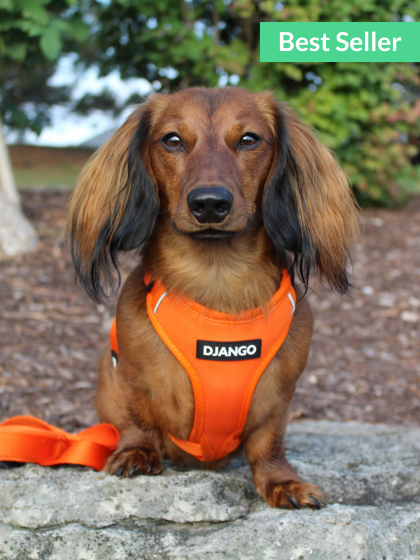
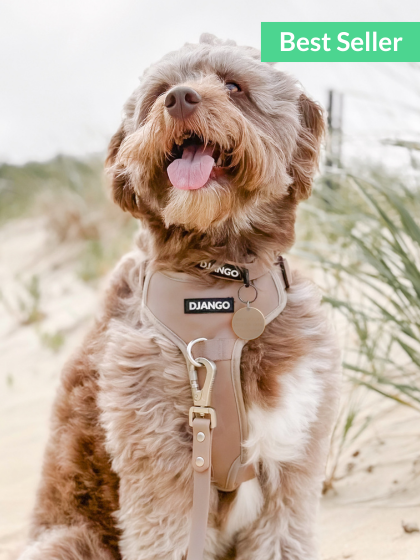
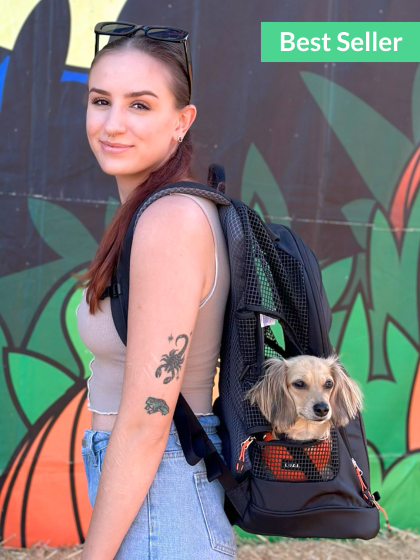
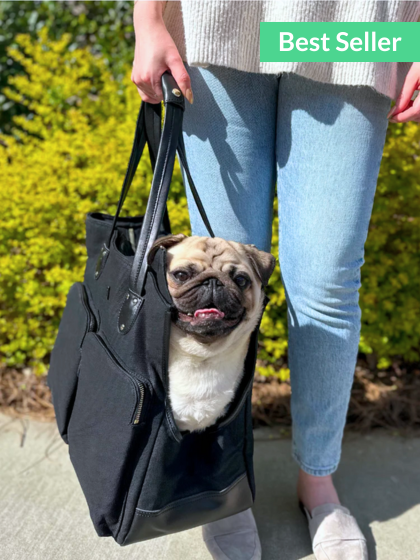
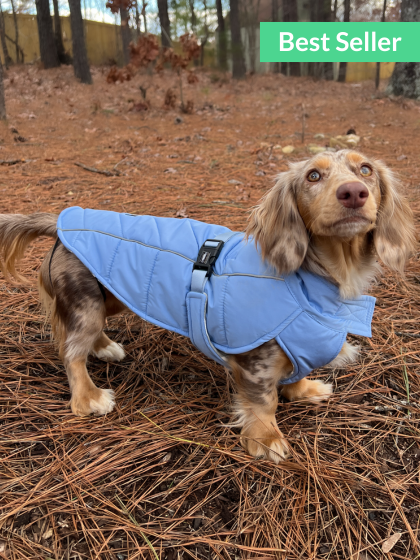
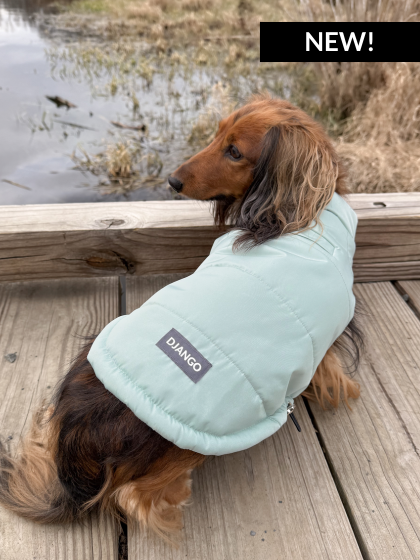
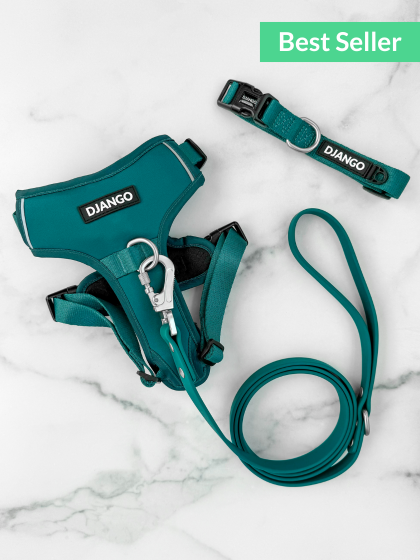
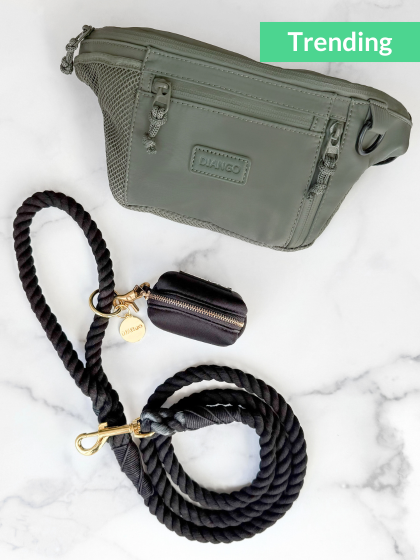
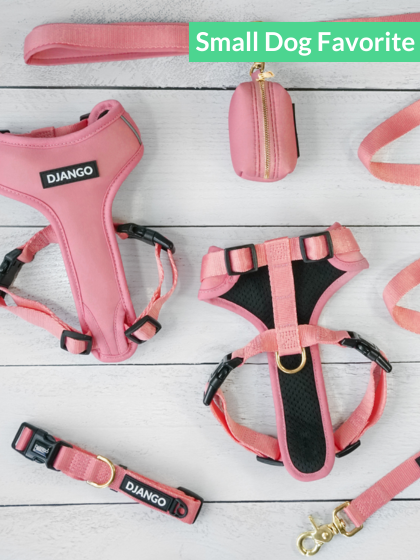

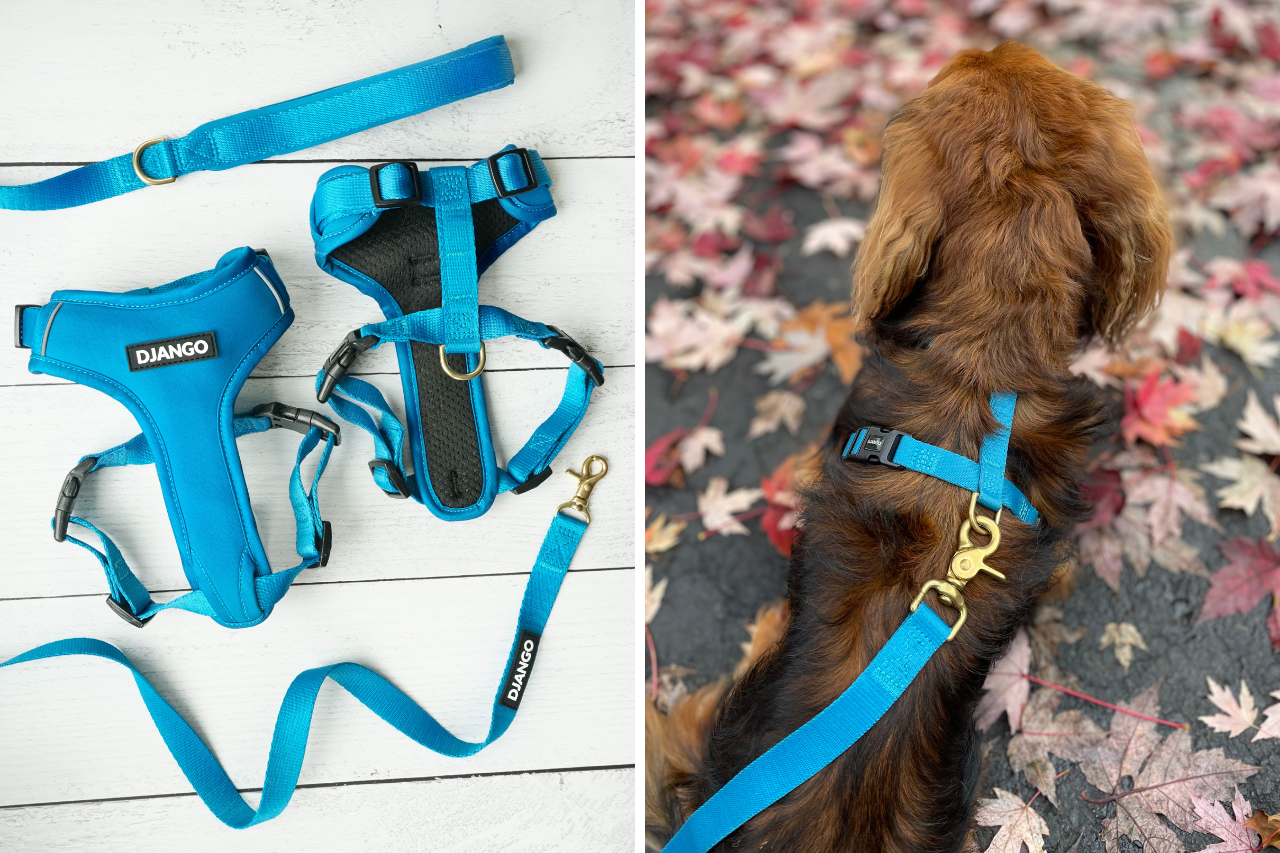





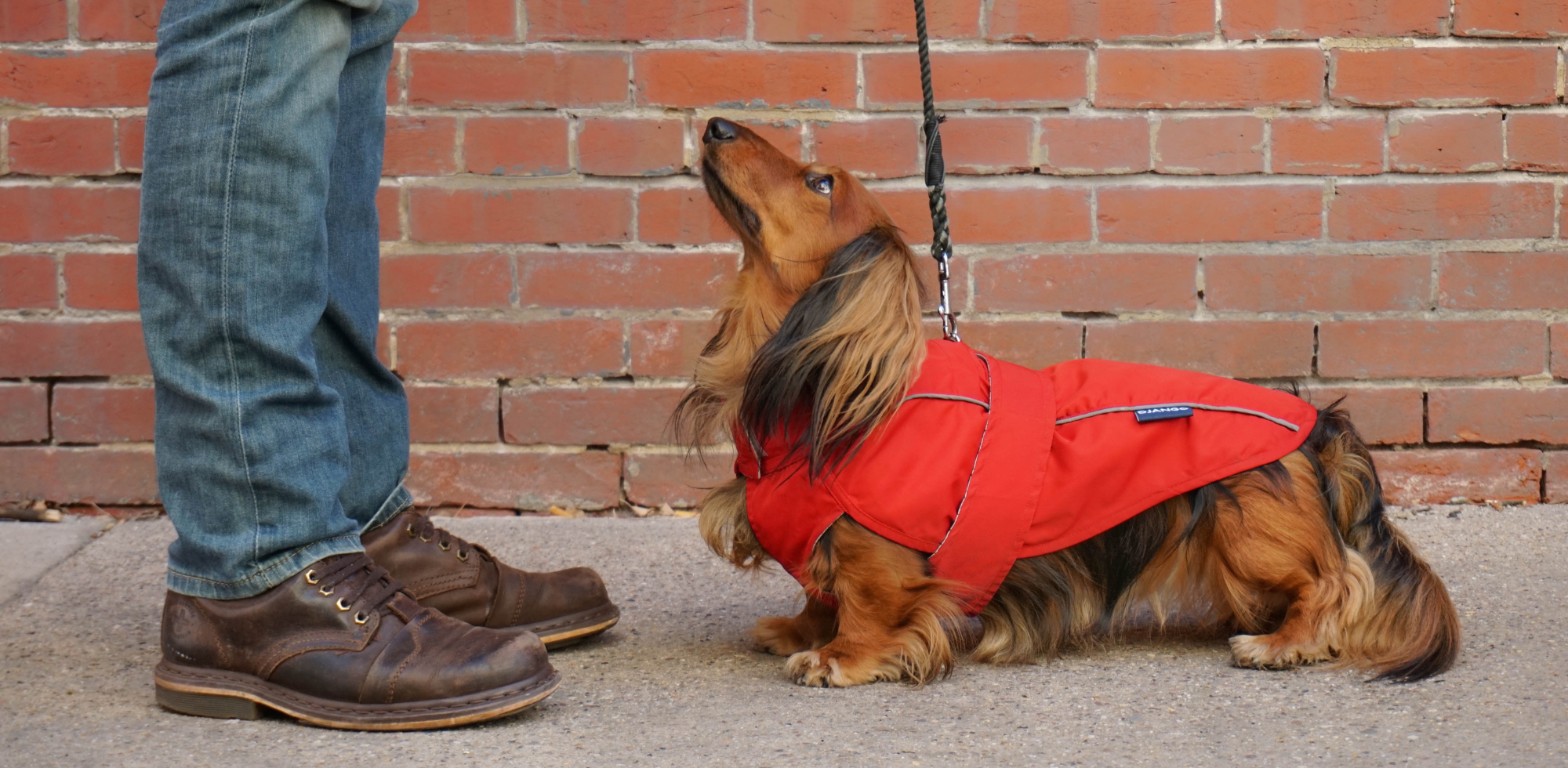
1 comment
Dog harness vast
Great article.
Great article.